Boats aren't typically supposed to fly. That is to literally float a few centimeters or more off the surface of the water at blistering speeds, but interestingly some do and it isn't a new innovation. In fact, hydrofoil technology has existed since the early 1900s, which might be surprising for some. According to Yachting World, the very first instance of a hydrofoil boat is to be found in 1906 and was created by the Italian engineer Enrico Forlanini.
Hydrofoil concepts in a commercial capacity didn't make headwaves until the Swiss company Supramar launched its PT10 in 1952, which says alot about how thoroughly investigated the technology was throughout the early years of the 20th century. Supramar would later design a multitude of offshoots to its PT10, while around the world hydrofoil concepts would find immense interest in a military capacity, including even under the guise of the United States with its own XCH-4 designed by William P. Carl.
The technology clearly has found several avenues for success, most notably in sailing and general boating, but it is largely most popular on ferries and passenger boats. Around the globe a number of ferries leverage hydrofoils to make inner-city travel all the more comfortable and speedier. Such services include Vokshods set across the Danube, allowing passengers to and fro Tulcea abd Sulina, the hydrofoil service set between Yalova and Instanbul, the Vietnamese Greenline Company set between Con Dao island, Vung Tau, and Ho Chi Minh City, as well as a plethora more, most of which can be found in and around Russia thanks to its Meteor, Cometa, Polesye, and Vokshod services.
So, what makes Candela's own hydrofoil concepts so special despite the technology's long-winded backstory? Electrification.
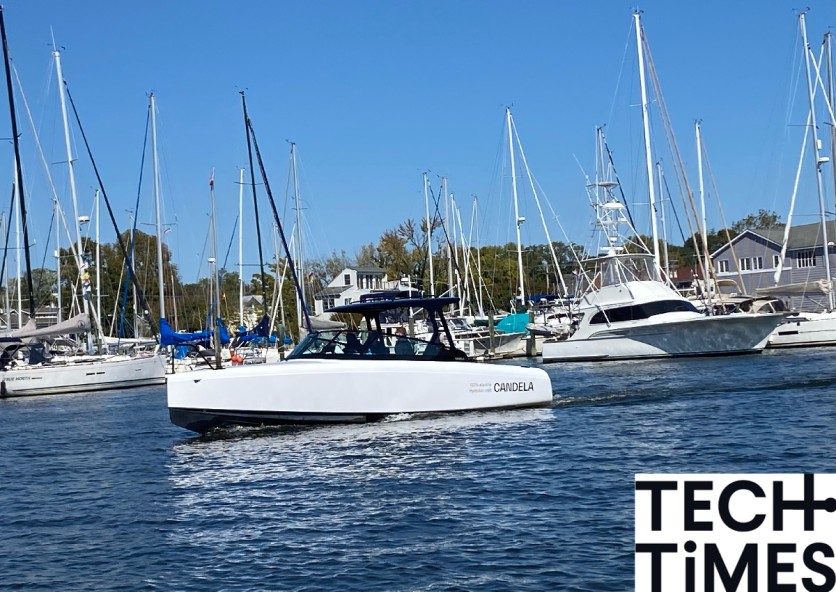
Founded in 2014, Candela was born from a need to approach environmental issues with inspiration taken from the likes of Tesla. Gustav Hasselskog saw an opportunity to do away with excessive costs and pollution wrought by traditional gasoline boats. With a five year research and development period set specifically on the nature of hardware and software associated with the control system, the firm would come out victorious in delivering its mission, as Candela itself puts it: "to make an electric boat with better performance than the fossil fuel competitors."
While the company's C-7 proved to be a major delight back in 2020, exemplifying the brand's identity and paving the way forward by way of becoming the best-selling electric boat in Europe, the updated and upgraded C-8 only furthers Candela's knowhow. The electric hydrofoil boat literally just went into full production on October 17, 2023 and has already wowed the masses, flying home with 2023's European Powerboat of the year and smashing a world record with 483 miles traveled in one day.
It's certainly no slouch and we at Tech Times were lucky enough to test the boat out across the waters of the Chesapeake Bay in Annapolis, Maryland. Not a mere stone throw's away from the 2023 Annapolis Boat Show, Candela's C-8 gleamed with a prowess all its own. The boat's sleek white surfaces and incredibly modern design make it stand out amidst the masses as something different, especially when its hydrofoils pop the boat up like some on-water party trick.
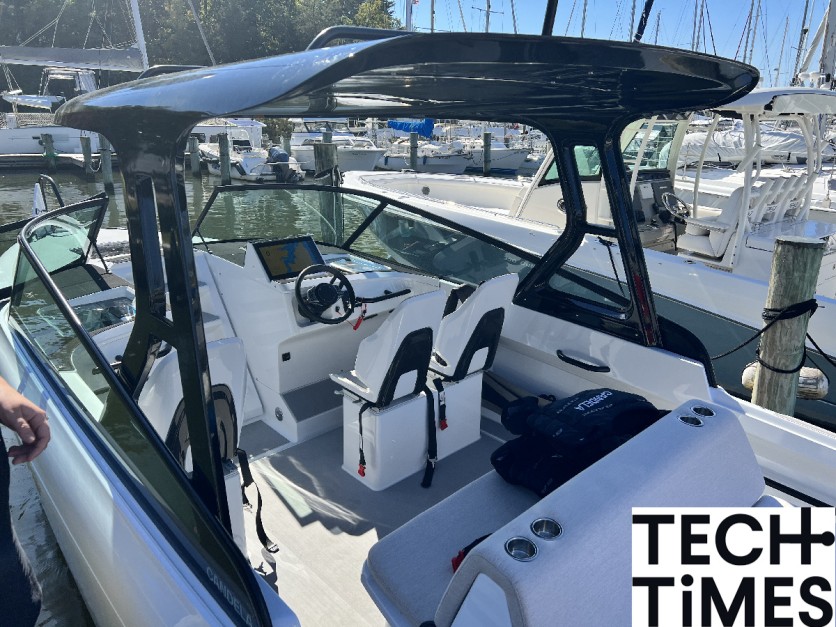
Surrounded in a completely carbon fiber body, the C-8 leverages a 69 kWh battery pack ripped straight from the Polestar 2. It has DC fast charging capabilities, as one might expect, and can be charged from zero to 100 in 45 minutes flat, a record difference compared to more common 30 amps charging at 5.5 hours.
The C-8 we tested didn't have the Polestar battery, but an one from an unnamed Chinese firm. However, future models will of course be fitted with the Polestar option. Much of the onboard software has been tailored specifically to the Polestar battery, and thus makes it the most viable option, but the company does note those interested can theortecially fit any battery cell on the C-8, however special positioning of the battery as well as additional backend software support would be necessary.

The boat is complimented with a 57 nautical mile range at 22 knots, but it can hit a 27 knot top speed. The hydrofoil lift function can be activated at 16 knots and to bring the boat back down the C-8 will need to maintain 18 knots. When the hydrofoils are stored they extend about 2.5 to 3 feet in the air on either side of the dash and are deployed in about 10 seconds. They use special electric motors for deployment and retraction in the face of proper hydraulics, which entails less maintenance overall.
Its carbon fiber body allows the ship immense functionality, most prominently in the weight department and rigidity. Even the C-8's chairs are made of carbon fiber, which ensures it can operate using electric power without restraint. With its flat hull design, the C-8 does rock a bit from side to side, but is much more stable when hydrofoils are enabled. There wasn't too much wake to test this out, but is a bit more roll-prone than alternative vessels.
Wind could be another problem entirely, especially when the hydrofoils are extended. If wind speeds are higher than 10 or even 15 knots, I would start to feel a bit anxious about going out on the water with my C-8. While it may not have had any safety precautions in terms of the wind, it does have a variety of helpful components under the water, like designated breaking points in the offchance the captain hits a rock, allowing the hydrofoils to safely fold backwards.
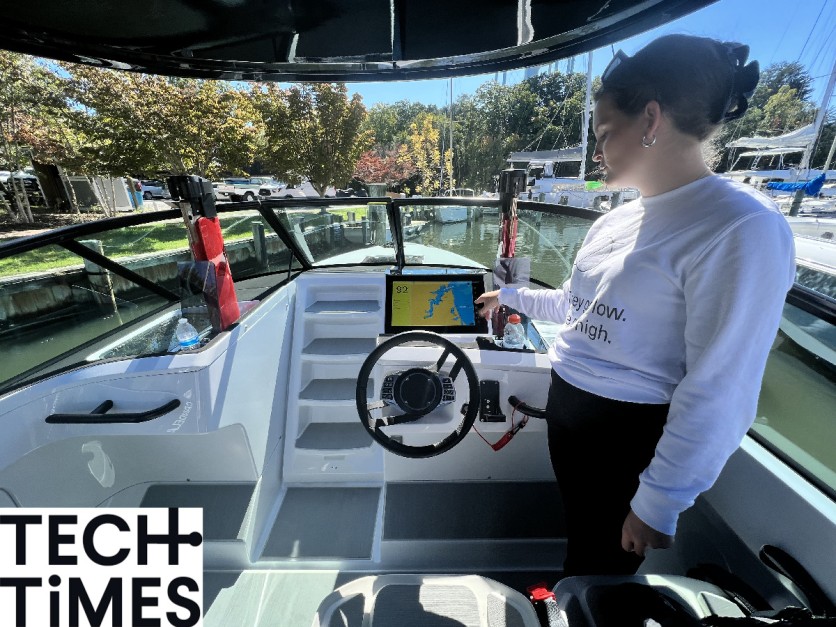
The C-8 comes equipped with a center console and an accompanying app. It even sports its own SIM card and is thus always connected to the internet. The app allows captains to control assorted features, like lights, music, and map data, but not throttling or steering. Candela is still working on delivering extra functions to the C-8, like autopilot, which does have a physical button on the user interface but doesn't work. There was a second button, but the company was not allowed to disclose what the function of it was, so we'll have to wait and see where that leads.
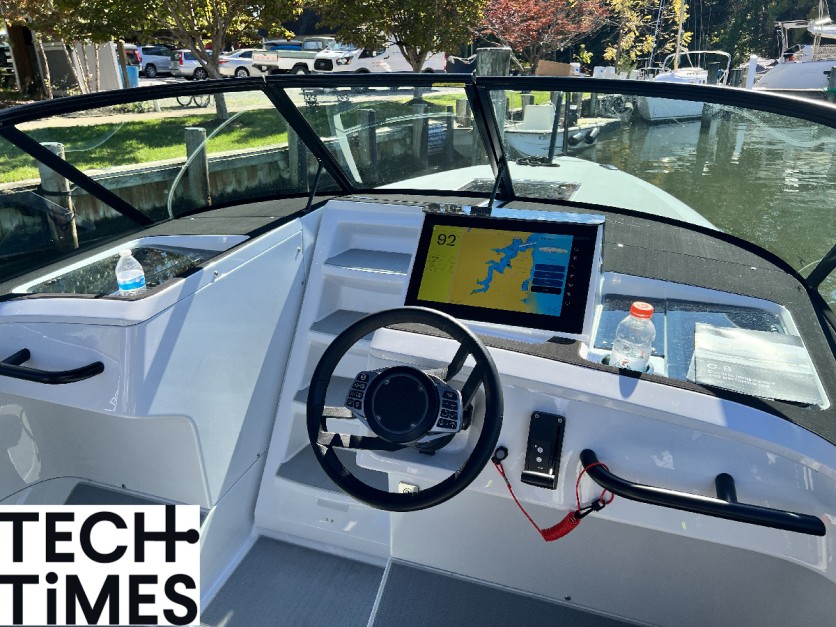
The experience itself out on the water was quite magical. Many other boaters and passersby, even amid the ongoing boat show, proved to be entranced by the C-8, probably most of all due to its hydrofoils. The instant torque was quite astounding, thanks to the electric powertrain, allowing the vessel to very easily and instantly stop and start on a dime. The C-8 also comes equipped with a depthfinder so captains are less likely of hitting any underwater obstructions.
Much like the hydrofoils, the C-8's propellers can lift up and out of the water. They're attached to the rudder and allow boat owners easy access once in a stored position via hatches. This is phenomenal for maintenance, as they won't be overly damaged from algae and drag, as well as making winterizing all the more streamlined.
The cabin at the bow is also, to put it bluntly, nothing special. There's very little head room to stand and much of the C-8's cabin we visited was packed with a bed, which is probably more than enough for potential buyers. There was also a toilet built in the middle of the bed covered by cushioned panels, a design choice I personally have never seen before, but a loo is available for concerned parties.

Candela offers the C-8 in three main options: T-Top, Daycruiser, and Hardtop. Primarily these models are made for varied climates, with the T-Top being for sunnier and more tropical areas, whereas the Hardtop is obviously more for weather-prone places. All Candela C-8 models start at $395,000 and those interested can reach out to Candela for a test flight at select marinas in Switzerland, France, Germany, Austria, and Hungary.
While the C-8 is certainly Candela's shining feat, a testament to its continued development in both electrification and hydrofoiling technologies, it's not the only vessel in its fleet. I personally did not get the chance to see or ride on it, but I couldn't NOT speak on one of Candela's most interesting proponents. As mentioned already, ferries have proven to be one of the most prominent exemplars of hydrofoil technology, and Candela will only ensure this will continue to find innovation through a 30-passenger electric beast coined the P-12.
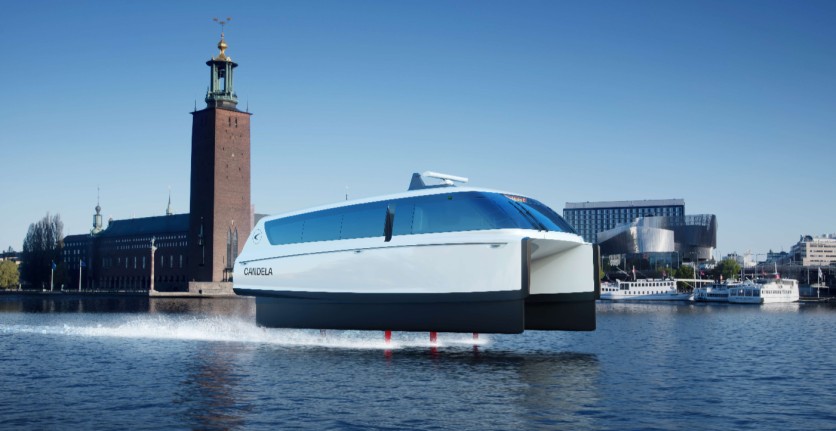
Akin to its C-8 counterpart, the P-12 shuttle is wrapped entirely in carbon fiber, weighing around 8,500 kg. It's already well in use in Sweden, transporting commuters between Stockholm and Ekerö, leveraging those well-loved computer-guided hydrofoils at 30 km per hour. The P-12 uses twin C-POD 50 kW electric drivers mounted to the aft of the hydrofoils in tandem with a permanent magnet motor that sits underneath the water.
The P-12 could well change commuter travel entirely. On the topic of carbon emissions, Candela boasts it wields an 80% reduction in energy consumption over conventional boats, and is likewise the fastest electric passenger boat available. Thus, commuters don't have to sacrifice their time in the face of going green. The P-12 is not merely built to revolutionize inner-city travel, but to also re-energize cleanliness in said cities around the world.
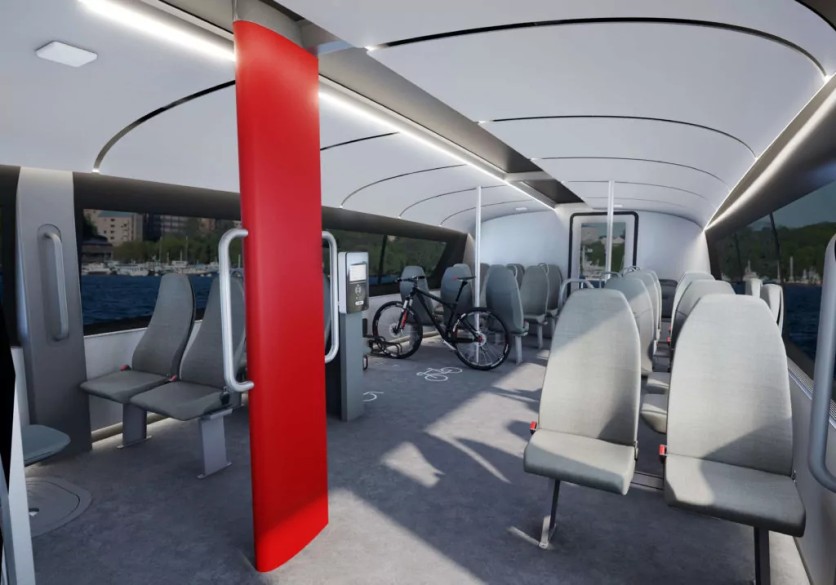
As someone who lives and works around New York City, I welcome anything that'll address the nasty and often toxic air around here. The P-12 seems like a no-brainer for adoption in place of current diesel ferries that shuttle commuters to and fro New Jersey. I can already see a pin-stripe painted iteration of the P-12, reviving the long-forgotten Yankee Clipper from year's past.
With all of that being said, it should be made fundamentally clear just how exhaustively thorough and forward-thinking Candela has been when it comes to electrification on the open seas. It's not only pioneering hydrofoil concepts, but proving their importance most especially when paired with electric vessels and sophisticated computing. Where next the firm will take its knowhow is up to the imagination, but there is no doubt that Candela vessels will no sooner take over the seas, reinvigorating the ways we look at commuting all the while tackling pollution in the most sophistcated, aesthetically pleasing manner possible.
ⓒ 2025 TECHTIMES.com All rights reserved. Do not reproduce without permission.




